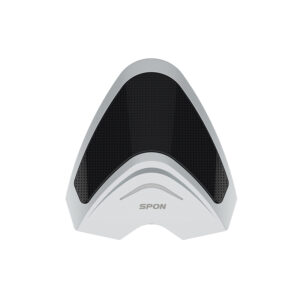The automotive manufacturing industry and automotive sales prediction have seen the application of various auto-generate technologies and models. These technologies aim to optimize manufacturing processes, improve product design, enhance supply chain management, and predict sales trends. While it’s difficult to provide an exhaustive list, I can mention some commonly used technologies and models in these areas:

Robotics and Automation:
Robotics and automation technologies are extensively used in the automotive manufacturing industry. Robotic arms, automated assembly lines, and autonomous guided vehicles (AGVs) are employed for tasks such as welding, painting, assembly, and material handling, increasing efficiency, precision, and productivity.
Automotive manufacturers such as Tesla, BMW, and Ford have implemented robotic systems for tasks like welding, painting, and assembly. Robots like KUKA, ABB, and Fanuc are commonly used in automotive production lines to improve efficiency and precision.
Computer-Aided Design and Engineering (CAD/CAE):
CAD and CAE software tools enable auto manufacturers to design and simulate vehicle components and systems in a virtual environment. These tools assist in optimizing designs, conducting structural analysis, and evaluating performance, reducing the need for physical prototypes and expediting the product development process.
Case:Auto manufacturers utilize CAD software like CATIA, Siemens NX, and SolidWorks to design vehicle components and systems. CAE tools such as ANSYS and LS-DYNA are employed for structural analysis, crash simulations, and optimizing designs.
Predictive Maintenance:
Predictive maintenance models utilize sensor data and machine learning algorithms to predict the failure or degradation of automotive components. By analyzing real-time data, these models can identify potential issues and schedule maintenance or repairs proactively, minimizing downtime and optimizing maintenance operations.
Case:Automotive companies like General Motors and Toyota use predictive maintenance systems to monitor vehicle health. For example, General Motors employs OnStar, a telematics system that detects maintenance needs and alerts drivers. Toyota uses its Smart Maintenance System to analyze vehicle data and predict maintenance requirements.
Supply Chain Optimization:
Auto manufacturers employ supply chain optimization models and technologies to improve logistics and inventory management. These tools use demand forecasting, production planning, and inventory optimization techniques to streamline operations, reduce costs, and ensure timely availability of parts and components.
Case:Companies like Volkswagen and Toyota employ supply chain optimization solutions to optimize logistics and inventory management. Tools like SAP Supply Chain Management (SCM) and Oracle Supply Chain Planning (SCP) assist in demand forecasting, production planning, and inventory optimization.
Sales Prediction and Demand Forecasting
Machine learning models and statistical techniques are applied to predict automotive sales and forecast demand. These models analyze historical sales data, market trends, economic indicators, and other relevant factors to generate predictions for future sales, helping manufacturers and dealers make informed decisions regarding production, inventory, and marketing strategies.
Case:Automotive manufacturers and dealers use machine learning models for sales prediction and demand forecasting. For instance, Ford utilizes predictive analytics models to forecast demand for specific vehicle models and features, aiding production planning and inventory management.
Connected Vehicles and Telematics
Connected vehicle technologies enable the collection of real-time data from vehicles, including performance metrics, driver behavior, and location information. This data is utilized to improve vehicle design, develop personalized services, optimize vehicle performance, and enhance safety features.
Case:Automakers like BMW and Audi incorporate connected vehicle technologies. BMW’s ConnectedDrive and Audi’s MMI Connect enable features such as remote vehicle monitoring, navigation services, and real-time traffic updates. These technologies gather data that can be used for improving vehicle performance and offering personalized services.
These are some of the auto-generate technologies and models commonly used in the automotive manufacturing industry and automotive sales prediction. The specific implementation and adoption of these technologies vary across companies and regions, depending on factors such as technological infrastructure, industry practices, and market dynamics. Additionally, advancements in artificial intelligence, data analytics, and IoT continue to drive innovation in the automotive industry, leading to the emergence of new auto-generate technologies and models.
















+ There are no comments
Add yours